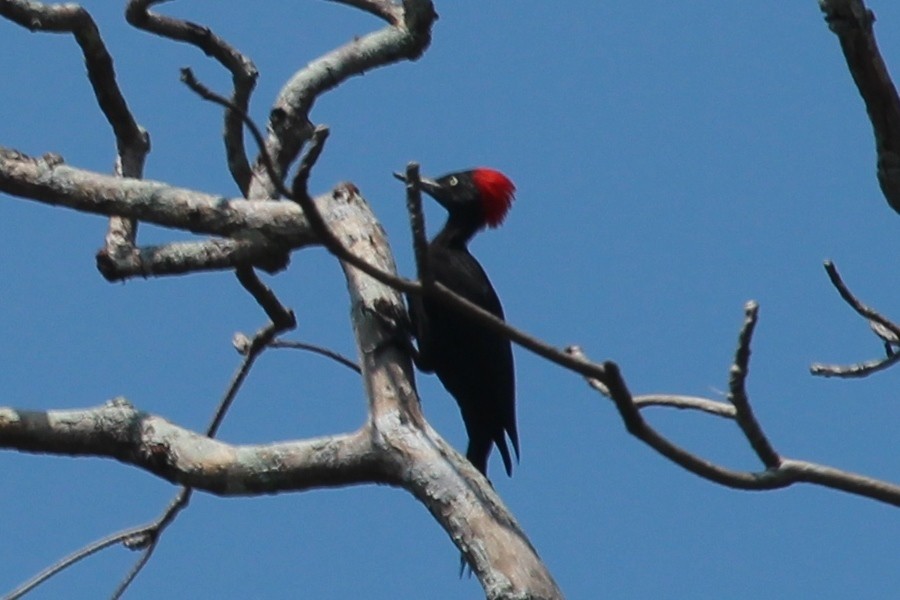Andaman Woodpecker
A species of Woodpecker Scientific name : Dryocopus hodgei Genus : Woodpecker
Andaman Woodpecker, A species of Woodpecker
Botanical name: Dryocopus hodgei
Genus: Woodpecker
Content
Description General Info
 Photo By subhashc , used under CC-BY-NC-4.0 /Cropped and compressed from original
Photo By subhashc , used under CC-BY-NC-4.0 /Cropped and compressed from original Description
The Andaman woodpecker is around 38 cm (15 in) long and weighs between 156–255 g (5.5–9.0 oz). The plumage is mostly slate-grey to black, with a bright red crest. The male also has a red crown and malar area under the eye. The bare skin around the eye is grey, and the legs are slaty coloured, and the bill is black. The irises are pale yellow. Juvenile birds look like adults but have browner, duller plumage and brown eyes, and may have with feathers in the crown. The species differs from the white-bellied woodpecker in not having a white belly and having more slate-coloured plumage (as opposed to black). 
Size
38 cm
Nest Placement
Cavity
Feeding Habits
Andaman Woodpecker primarily consumes ants, often spotted foraging on tree trunks and main branches or even hammering at the ground. Typically found in pairs or family groups, andaman Woodpecker demonstrates powerful hammering behavior to extract food.
Habitat
Andaman Woodpecker predominantly resides in tall evergreen forests, which are typically dense and verdant, yet occasionally exhibit a more open structure. These lowland forests are generally characterized by high rainfall and are part of the broader region of tropical rainforests. The primary threat to andaman Woodpecker's habitat stems from deforestation driven by human expansion and agricultural development, highlighting the urgent conservation needs for these ecosystems.
Dite type
Insectivorous
General Info
Feeding Habits
Bird food type
Behavior
Little is recorded about the behaviour of the Andaman woodpecker. It lives in pairs, but also associates in small flocks. It forages on large trunks and branches, but has also been recorded foraging on the ground for ants. It has been recorded breeding between January and March, and breeds in a nest hole 6–14 m (20–46 ft) off the forest floor, in a dead tree. Two eggs are laid. 